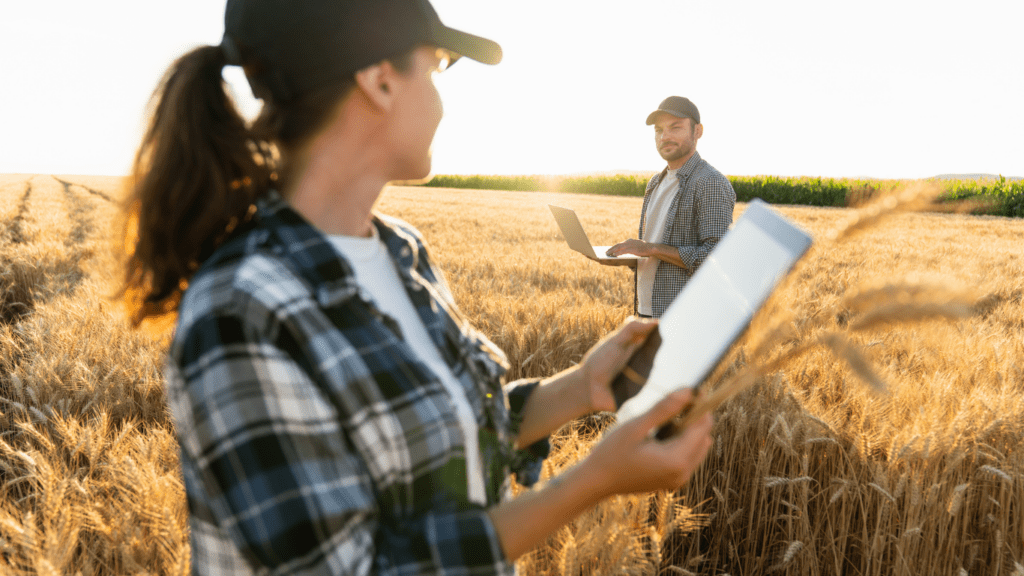Understanding E-Commerce in Agriculture
E-commerce in agriculture leverages online platforms to connect farmers with a broader market. This technological integration enhances the entire supply chain, making processes more efficient and transparent.
Key Components of Agricultural E-Commerce
- Online Marketplaces: Websites like Alibaba and Amazon enable farmers to sell products directly to consumers. These platforms provide a global reach, eliminating traditional middlemen.
- Digital Payment Systems: Technologies such as PayPal and mobile banking streamline transactions. They provide secure payment methods, reducing the risks associated with cash-based transactions.
- Supply Chain Management: Tools like blockchain track produce from farm to table. This guarantees transparency and traceability, which is crucial for organic and fair-trade certifications.
- Logistics and Distribution: Platforms like Uber Freight facilitate efficient delivery. They connect farmers with logistics services, ensuring timely and cost-effective transportation of goods.
Benefits of E-Commerce in Agriculture
- Increased Market Access: Small-scale farmers can access larger markets. This amplifies their customer base and boosts revenue opportunities.
- Enhanced Efficiency: Automation reduces manual labor. Technologies like drones for monitoring and robots for harvesting speed up production.
- Data-Driven Decisions: Farmers use analytics for crop management. Insights from data improve yield predictions and optimize resource allocation.
- India: Platforms like BigHaat provide a direct sales channel for farmers. They offer agricultural inputs and equipment alongside produce sales.
- Africa: M-Farm connects Kenyan farmers to buyers and market prices. This transparency empowers farmers to negotiate better deals.
- Europe: Food Assembly promotes local producers. Consumers pre-order online and pick up products at designated locations, ensuring fresh and local produce.
Farmers adopting e-commerce can maximize these advancements. They adapt to modern market demands, ensuring continued growth and sustainability in the agricultural sector.
Changes in the Agricultural Supply Chain
E-commerce’s rise has brought significant changes to the agricultural supply chain, transforming how farmers, distributors, and consumers interact.
Improved Efficiency and Speed
E-commerce platforms streamline transactions between farmers and buyers. Digital tools manage inventory, orders, and payments in real-time.
Farmers can now sell produce without intermediaries, reducing delays. For instance, using blockchain for supply chain management ensures product traceability, enhancing both speed and reliability.
Logistics platforms like Uber Freight enable swift transportation of goods, minimizing spoilage and maximizing freshness.
Enhanced Market Access
E-commerce provides farmers access to broader and more diverse markets. Online platforms allow small-scale producers to reach international consumers, bypassing traditional barriers.
Websites like Alibaba and eBay enable farmers to list their products globally. Digital marketing tools help farmers promote their produce to niche markets, increasing their customer base.
Through platforms like M-Farm, farmers in Africa connect directly with buyers, ensuring fair trade and better prices.
Benefits to Farmers

E-commerce provides significant advantages to farmers by enhancing efficiency and expanding market opportunities.
Increased Profit Margins
By selling directly to consumers via e-commerce platforms, farmers eliminate intermediaries. Farmers using digital marketplaces retain a larger portion of the sale price, significantly increasing profit margins.
For example, platforms like BigHaat allow farmers to list products and connect directly with buyers, reducing costs associated with traditional supply chains.
Access to Global Markets
E-commerce offers farmers access to international markets. This access isn’t limited to local demand, so farmers can sell surplus produce worldwide.
Platforms like Alibaba and eBay enable this global reach, allowing even small-scale farmers to export goods. For instance, Kenyan farmers use M-Farm to find international buyers.
This broad market access ensures higher demand, better prices, and improved economic stability for farmers.
Challenges and Limitations
Despite the numerous benefits of integrating e-commerce into the agricultural supply chain, several challenges and limitations persist.
Technological Barriers
Limited internet access, especially in rural areas, hinders many farmers from tapping into e-commerce platforms. World Bank data shows that only 43% of individuals in Sub-Saharan Africa have internet access.
In addition, the lack of digital literacy creates a gap where farmers can’t fully utilize online tools. Older generations, for example, may struggle with navigating complex e-commerce interfaces, reducing their ability to benefit from these platforms.
Device availability and affordability further exacerbate these technological challenges.
Regulatory and Logistic Issues
The diverse regulatory environments across regions create hurdles for seamless e-commerce operations. Varying food safety standards and import/export regulations complicate cross-border transactions. For instance, farmers in developing countries must often navigate stringent regulations when exporting to European markets.
Logistic challenges also pose significant impediments. Infrastructural deficiencies like poor road networks cause delays and increase transportation costs, directly impacting the efficiency of the supply chain. Unreliable postal services in certain areas can disrupt timely deliveries, affecting customer satisfaction and trust.
Case Studies and Examples
E-commerce has produced notable shifts in the agricultural supply chain. I’ll provide specific examples and case studies of successful platforms and innovative solutions.
Successful E-Commerce Platforms
- BigHaat (India): BigHaat connects farmers directly with suppliers. It’s expanded access to quality seeds, fertilizers, and machinery. Farmers place orders via mobile apps, reducing the role of middlemen and enhancing profitability.
- M-Farm (Kenya): M-Farm offers market price information and connects farmers to buyers. It empowers farmers to negotiate better prices by providing up-to-date market trends. Since its launch, M-Farm has reduced exploitation and increased incomes for smallholders.
- Alibaba (Global): Alibaba facilitates international trade for agricultural products. It allows farmers to reach global markets, resulting in higher demand and improved economic stability. Many farmers now export honey, coffee, and nuts, benefiting from e-commerce’s global reach.
- Blockchain Traceability: Platforms like IBM Food Trust use blockchain to ensure product traceability. It enhances transparency from farm to table, helping consumers trust the origin and handling of their food. This innovation minimizes fraud and improves food safety standards.
- Precision Agriculture: E-commerce platforms are integrating AI and IoT devices. Examples include smart irrigation systems and drones for crop monitoring. These technologies offer real-time data, helping farmers optimize water usage and yield.
- Digital Payment Solutions: Platforms like PayTM and M-Pesa have simplified transactions in rural areas. They reduce dependency on cash, ensuring secure and swift payments. This shift supports financial inclusion and reduces barriers to market access.
By examining these platforms and innovations, it’s evident how e-commerce reshapes the agricultural supply chain, offering tremendous benefits while presenting new opportunities for further advancements.
Future Trends and Developments
E-commerce’s influence on agriculture is poised for significant growth. Digital platforms will integrate advanced analytics, giving farmers real-time insights to optimize production. For instance, platforms could use AI-powered algorithms to predict crop yields and suggest best practices.
Mobile technology will drive accessibility. With smartphone penetration increasing, even small-scale farmers in remote areas can access markets, receive weather updates, and engage in training programs. These advancements will reduce knowledge gaps and enhance productivity.
Blockchain technology will ensure transparency. Blockchain will secure data across the supply chain, from seed to shelf. Consumers can verify product origins, giving them confidence in the supply chain’s integrity.
Drone technology will revolutionize monitoring. E-commerce platforms will incorporate drone data to assess crop health and manage farm operations. This technology will reduce labor costs and improve precision agriculture practices.
Digital payment systems will streamline transactions. Mobile wallets and digital banking will facilitate faster and more secure payments, reducing the reliance on cash and lowering transaction fees.
Collaborative platforms will foster community. Farmers will share resources and knowledge, leveraging collective intelligence for better decision-making. Online forums and social networks will support this exchange.
Sustainability will become central. E-commerce will promote environmentally friendly practices by linking farmers to suppliers of eco-friendly products and services. This shift will support long-term agricultural sustainability.
E-commerce developments will continue shaping the agricultural supply chain. By embracing these trends, farmers can increase productivity, profitability, and sustainability.



